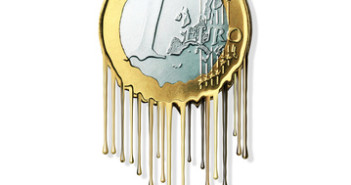EUR/USD has been very sensitive of late to every comment regarding the ECB’s next move: rate cut or no rate cut? That was the question.
The economic situation in the euro-zone certainly warrants more easing measures, but rates are already very low. Yet in order to achieve a real change, the ECB might have to go for the “nuclear option”: setting a negative deposit rate. Is the moment ripe for such action?
Update: the ECB cut the rates by 0.25% and left the deposit rate unchanged at 0%. This pushed the euro higher. However, during the press conference (see full coverage), Draghi hinted heavily about a negative deposit rate and sent the euro crashing.
“Downside risks have materialized” said ECB president Mario Draghi last time, and the situation has worsened since. Here are some reminders:
- Portugal might need a second bailout and Slovenia is struggling to avoid a bailout.
- Unemployment reached 12% in the euro-zone, and in Spain it climbed to 27.2% and is expected to remain above 25% in 2015. French unemployment is at a record high.
- German PMIs and business sentiment indicators are worse.
So, a rate cut should help stimulate the economies of the euro-zone, right? No.
The ECB’s main lending rate stands at 0.75%, to which it was lowered back in July 2012, when the situation worsened. This was a historic low set by Draghi. His predecessor Trichet lowered the rate to 1% and lifted it back up. This is not 0-0.25% like in the US, 0.10% in Japan and the UK’s 0.50% rate. However, this doesn’t make too much of a difference.
The Euribor, often used for mortgages in the EU and for various other lending operations, stands at 0.515% at the time of writing. Sure, it can go lower, but will this encourage lending?
Not really. The markets don’t suffer from high prices for lending, but rather from the lack of worthy lenders.
Exchange rate
A rate cut could help in lowering the exchange rate of the euro, especially in light of the ongoing open ended QE in the US and the new QE blitz from Japan. We have already seen the euro drop on such speculations. But far can it go, and how long will it last?
The last rate cut had a limited effect, and another one will probably have an even smaller effect, especially on the background of global QE.
Deposit rate
Draghi not only lowered the main lending rate to 0.75%, but also lowered the deposit rate to 0%. The deposit rate is what banks get for parking their money with the ECB.
The deposit rate can go below 0%: banks parking their money with the ECB would be punished for doing so, and would be encouraged to lend out their money. This could be the official reasoning.
Yet such a move would also serve to send money out of the euro-zone as banks would search other places to put their money – a place that will not punish them.
The problem with such a move is that it could get out of control: outflows could have “unintended consequences” of rapid movements of money. In addition, using this option would make it unavailable in the future: the option is good also as a threat.
Draghi could hint about using this option at first, as a means to encourage banks to lend and weaken the euro, without actually doing it immediately. Draghi’s words have a very strong effects.
4 Scenarios for the ECB Decision
The markets will initially look at the rate decision, due on Thursday, May 2nd, at 11:45 GMT and will then listen carefully to Draghi’s press conference at 12:30 GMT.
- No cut: Given the limited impact on lending, this is a realistic option. It would send the euro higher immediately. Draghi could later weigh on the euro with hints about a future rate cut, but he would be unlikely to change the course of the single currency as there are high expectations for a rate cut.
- Cut of the lending rate without new hints: This would send the euro down, but not too far. This is partially priced in. Draghi’s words would be of higher importance. If he only talks about a worsening economic situation, the euro will likely stabilize.
- Cut of the lending rate and hints of more action: In this case, the euro would continue losing ground and suffer a second wave of selling, especially if the deposit rate is mentioned. This option has lower
- Cut of the lending and deposit rates: Using the aforementioned “nuclear option” would send the euro tumbling down rapidly. This scenario has a lower probability at this time.
What do you the ECB will do?
Further reading: EURUSD forecast.
